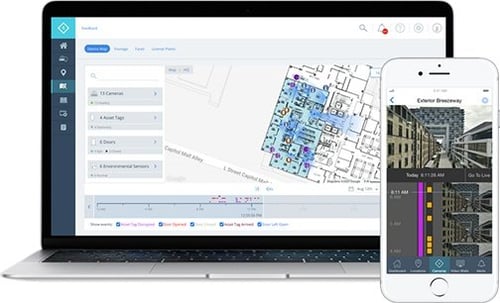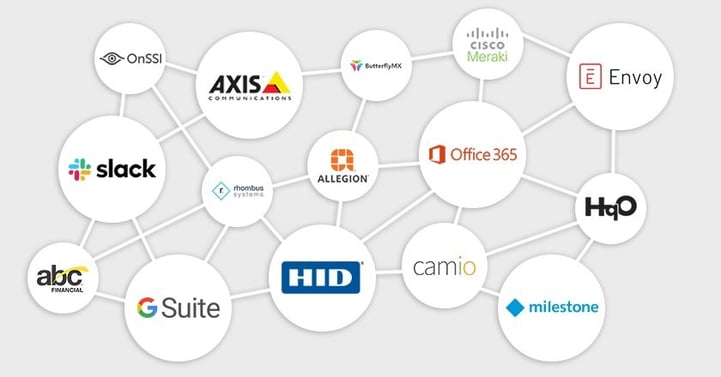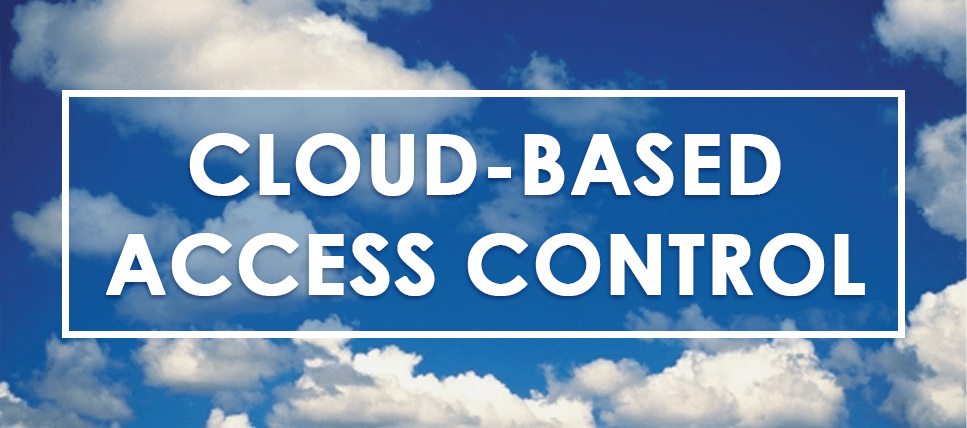Traditional access control is commonplace in most organizations. It provides reliable and effective security without the risks of physical keys and costs associated with on-premise security personnel.
However, a newer, more powerful player continues to gain prominence: cloud-based access control. If you’re still using standard access controls, it’s time to consider upgrading to this more powerful alternative.
What is cloud-based access control, and why should your organization consider it?
Let’s dive in.
What is cloud-based access control?
Cloud-based access control lets you manage and access your security system from any device, anywhere, anytime. There's no large investment in IT infrastructure, hardware, or expensive certifications. Instead, your data is hosted in off-premise data centers. Cloud-based access control simplifies your security, integrating multiple systems into a simple, user-friendly interface.
The Benefits of Cloud-Based Access Control
- Remote Monitoring
- Greater Flexibility
- Automatic Updates & Backups
- Enhanced Cyber Security
- Maintained Compliance
- Centralized Data
- Integration & Customization
- Ease of Management
- Scalability
- Lower Costs
1. Remote Monitoring
If you have a smartphone, tablet, or desktop, you can control and monitor your cloud-based access control system 24/7/365. Manage all of your locations from anywhere, whether that’s your home office, corporate headquarters, or on a beach in Hawaii.
Instantly revoke access if an employee is fired and react to smart alerts (like glass-breaking or after-hours activity) even if you aren’t onsite. Remote monitoring means you can take action immediately to minimize risk, damage, or loss. With real-time updates and remote monitoring capabilities, your organization can be more secure than ever.

Rhombus System's sleek user-interface.
2. Greater Flexibility
One of the greatest benefits of a powerful cloud-based system compared to a physical access control system is the additional flexibility it provides. Fluctuating workforces, expanding footprints, and constant user setting changes are easy to handle with a cloud-based access control solution.
Control access rights, monitor video surveillance, and manage physical security for multiple facilities from a single, remote location. Cloud-based access control platforms deliver the information you need on your device of choice, exactly when you need it. Unlock a door in the Ohio office when you're in California, suspend or grant access for an employee in another time zone, and monitor activity logs from your cell phone.
3. Automatic Updates & Backups
With cloud-based systems, servers and hardware are off-premise and off your to-do list. Software and security updates are done automatically, and a supplier handles other hardware and feature updates so your systems are current. Data also is automatically backed up and securely saved in case of theft, malfunction, or disaster.
4. Enhanced Cyber Security
The cloud gives organizations access to robust security solutions without investment in expensive IT infrastructure or trained personnel. Cloud-based access control simplifies your security, integrating multiple systems into a user-friendly interface.
Many IT experts consider a cloud infrastructure to be more secure than legacy systems because:
- Infrastructure is monitored at all times
- Security measures are multi-faceted, implemented from the servers to the devices and software
- Automatic updates ensure technology has the latest antivirus software, firewalls, security patches, etc.
- Most cloud service providers do annual audits to find and fix flaws. (When was the last time you audited your on-prem solution?)
In the end, however, the main driver of security breaches continues to be human error and not the technology itself. This stresses the importance of following security best practices and working with a technology integrator that stays on top of the latest threats.
5. Maintained Compliance
If you need to submit access logs regularly for compliance, a cloud-based system makes it easy to find and download relevant data from any of your facilities. No more going into the office to transfer files from an on-premise system.
Since all cloud data is encrypted and the servers are automatically updated with the latest security patches and programs, you can comply with industry standards for data management. Regulatory changes will be one less thing you have to worry about.
6. Centralized Data
Gone are the days of logging into a mainframe computer to update employee access and having to go into another system to view security footage. Cloud-based systems, and their flexible integrations, centralize all of your data. View all of your locations and all of your systems on one user-friendly platform.
7. Integrations & Customization
On-premise solutions are often proprietary and can be expensive and complicated to integrate. Cloud-based access control systems have APIs so you can integrate with other business applications like HR platforms, visitor management programs, video surveillance systems, alarm companies, analytics software, and more.
For example, get a Slack message when there’s suspicious activity, use your VMS to gain visual insight on the situation, instantly lockdown the facility if there’s a threat, and export the activity logs to Google Drive to begin investigating.
You can customize security reports and dashboards, set up unique rules and alerts, and create a system designed with your organization’s needs in mind.

Integrate with your most important business systems.
RELATED: Access Control and Video Surveillance Integrations
8. Ease of Management
Most of the previous benefits result in easier management of your system. Rules-based processes can be implemented, like granting and revoking employee access based on their employment status. You can also set up automated alerts to get notified when an individual attempts to access an unauthorized area, there's activity after hours, or unusual behavior is detected. Add or remove users, get real-time updates, access audit reports, edit door schedules, and more without extensive training or high costs.
Also consider that control levels can be assigned to different people, delegating management tasks without compromising security. User-friendly, intuitive interfaces make the systems easy to learn, and they can be managed from a phone, tablet, or desktop. These systems are designed with the end-user in mind and help create efficiencies and streamline processes.
9. Scalability
A cloud-based platform is easy to scale from a single door to a massive enterprise. Eliminating custom APIs and the design and installation of extensive hardware drastically reduces the time from concept to completion. The rollout process can even be implemented in phases. A flexible and easily scalable system eliminates the need for complex rollouts and configurations.
10. Lower Costs
Cloud-based systems are ideal for anyone with a tight budget — whether an SMB or a major corporation trying to improve their bottom line. Cloud-based access control eliminates some of the costs you'd incur with traditional physical security, like:
- Expensive hardware
- Always making/buying keys and key cards
- Expenses associated with running and maintaining servers
- Overpriced training for personnel
Instead, you pay for a subscription to the cloud service, the card readers, and door access controls. Most cloud subscriptions include server updates, maintenance, repairs, and upkeep.
Is Your Organization a Good Fit for Cloud-based Access Control?
On-premise physical access control is appropriate for some organizations, but investing in expensive local servers, hardware, and IT personnel to manage it isn't always feasible. That’s why small to medium-sized businesses (SMBs) or those on a tight budget can benefit greatly from cloud technologies.
Another great candidate for cloud-based access control is any organization that requires a lot of flexibility because you’re:
- Expanding your footprint (e.g., start-ups or growing enterprises)
- Have people who require access to multiple locations (e.g., coworking spaces or companies with a mobile workforce)
- Continually adding, removing, and updating users
A cloud-based platform is essential in these instances because it's designed to be more agile and better accommodate your needs.
Thinking about your next technology project? Use our Technology Project Budget Calculator to estimate how much it might cost. Also, reach out to our team of technology experts who’ve implemented cloud-based security and access control systems for multiple organizations across the country.



Leave a Comment